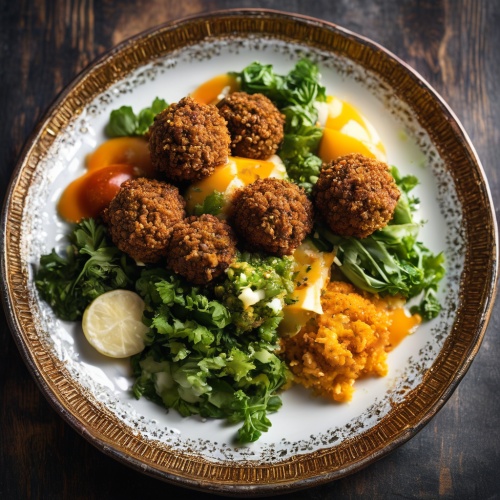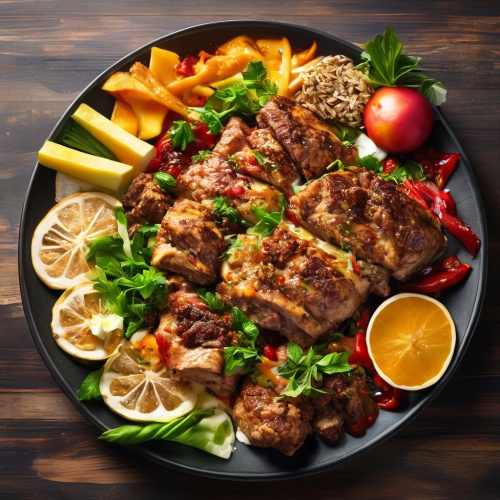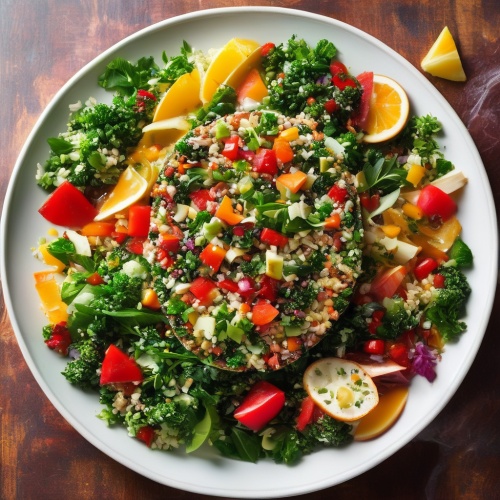Understand
Mina, a city with a vibrant history and municipality dating back to the 19th century, often gets mistakenly seen as just a neighborhood of Tripoli. However, this couldn't be further from the truth. With its Greek, Turkish, and Syrian influences, Mina has a unique culture with its own distinct accent that sets it apart from other regions in Lebanon. While French and English are commonly spoken, English proficiency is relatively low. Explore the hidden gems of Mina and uncover its rich heritage!
Map & Climate
Popular Foods
 Dish: FalafelFalafel is a traditional Lebanese dish made from mashed chickpeas, herbs (such as parsley and coriander), and spices, formed into small balls or patties and deep-fried until crispy. It's typically served in sandwiches called shawarma or kebbeh, accompanied by pickles, lettuce, tomatoes, and tahini sauce or hummus. Falafel can also be enjoyed as a mezze, an appetizer often shared among friends. The dish is mainly vegetarian but can sometimes include small amounts of meat in the form of ground beef or lamb in the kebbeh.
Dish: FalafelFalafel is a traditional Lebanese dish made from mashed chickpeas, herbs (such as parsley and coriander), and spices, formed into small balls or patties and deep-fried until crispy. It's typically served in sandwiches called shawarma or kebbeh, accompanied by pickles, lettuce, tomatoes, and tahini sauce or hummus. Falafel can also be enjoyed as a mezze, an appetizer often shared among friends. The dish is mainly vegetarian but can sometimes include small amounts of meat in the form of ground beef or lamb in the kebbeh.  Dish: ShawarmaShawarma refers to both a cooking technique and a dish. In Lebanon, it commonly involves marinated meat (usually chicken, beef, or lamb) that is slowly roasted on a vertical spit, then thinly sliced and served in sandwiches or on a platter. The flavorful meat is often accompanied by pickles, lettuce, tomatoes, and various sauces such as tahini, garlic, or spicy sauces. While shawarma is typically wrapped in pita bread, it can also be enjoyed over rice or salad. This dish is rarely vegetarian, as it primarily focuses on the marinated and rotating meat.
Dish: ShawarmaShawarma refers to both a cooking technique and a dish. In Lebanon, it commonly involves marinated meat (usually chicken, beef, or lamb) that is slowly roasted on a vertical spit, then thinly sliced and served in sandwiches or on a platter. The flavorful meat is often accompanied by pickles, lettuce, tomatoes, and various sauces such as tahini, garlic, or spicy sauces. While shawarma is typically wrapped in pita bread, it can also be enjoyed over rice or salad. This dish is rarely vegetarian, as it primarily focuses on the marinated and rotating meat.  Dish: Kibbeh nayyeKibbeh nayye, also known simply as kibbeh, is a popular Lebanese dish made from finely ground raw beef or lamb mixed with bulgur wheat, onions, and spices. The mixture is traditionally formed into oval or torpedo shapes and baked in the oven or fried. It's often served with a side of yogurt, pickles, lettuce, and tomatoes. Some variations of the dish may include additional ingredients, such as pine nuts or mint, but it remains predominantly non-vegetarian.
Dish: Kibbeh nayyeKibbeh nayye, also known simply as kibbeh, is a popular Lebanese dish made from finely ground raw beef or lamb mixed with bulgur wheat, onions, and spices. The mixture is traditionally formed into oval or torpedo shapes and baked in the oven or fried. It's often served with a side of yogurt, pickles, lettuce, and tomatoes. Some variations of the dish may include additional ingredients, such as pine nuts or mint, but it remains predominantly non-vegetarian. 




Comments
NO COMMENTS